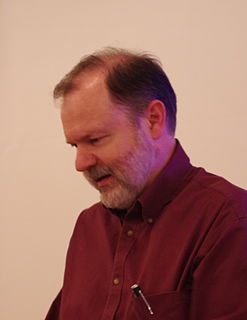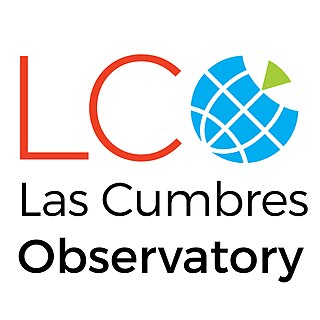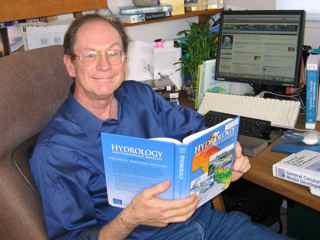Related Research Articles
Fred Kavli was a Norwegian-American businessman and philanthropist. He was born on a small farm in Eresfjord, Norway. He founded the Kavlico Corporation, located in Moorpark, California. Under his leadership, the company became one of the world's largest suppliers of sensors for aeronautic, automotive, and industrial applications supplying General Electric and the Ford Motor Company.

Robert J. Lang is an American physicist who is also one of the foremost origami artists and theorists in the world. He is known for his complex and elegant designs, most notably of insects and animals. He has studied the mathematics of origami and used computers to study the theories behind origami. He has made great advances in making real-world applications of origami to engineering problems.
Jerrold Clifford Manock is an American industrial designer. He worked for Apple Computer from 1977 to 1984, contributing to housing designs for the Apple II, Apple III, and earlier compact Apple Macintosh computers. Manock is widely regarded as the "father" of the Apple Industrial Design Group. Since 1976 he is the president and principal designer of Manock Comprehensive Design, Inc., with offices in Palo Alto, California, and Burlington, Vermont.

Las Campanas Observatory (LCO) is an astronomical observatory owned and operated by the Carnegie Institution for Science (CIS). It is in the southern Atacama Desert of Chile in the Atacama Region approximately 100 kilometres (62 mi) northeast of the city of La Serena. The LCO telescopes and other facilities are near the north end of a 7 km (4.3 mi) long mountain ridge. Cerro Las Campanas, near the southern end and over 2,500 m (8,200 ft) high, is the future home of the Giant Magellan Telescope.
Sir Henry Charles Husband, often known as H. C. Husband, was a leading British civil and consulting engineer from Sheffield, England, who designed bridges and other major civil engineering works. He is particularly known for his work on the Jodrell Bank radio telescopes; the first of these was the largest fully steerable radio telescope in the world on its completion in 1957. Other projects he was involved in designing include the Goonhilly Satellite Earth Station's aerials, one of the earliest telecobalt radiotherapy units, Sri Lanka's tallest building, and the rebuilding of Robert Stephenson's Britannia Bridge after a fire. He won the Royal Society's Royal Medal and the Wilhelm Exner Medal.

Las Cumbres Observatory (LCO) is a network of astronomical observatories run by a non-profit private operating foundation directed by the technologist Wayne Rosing. Its offices are in Goleta, California. The telescopes are located at both northern and southern hemisphere sites distributed in longitude around the Earth. For some astronomical objects, the longitudinal spacing of telescopes allows continuous observations over 24 hours or longer. The operating network currently consists of two 2 meter telescopes, nine 1 meter telescopes, and seven 40 cm telescopes, placed at six astronomical observatories. The network operates as a single, integrated, observing facility, using a software scheduler that continuously optimizes the planned observing schedule of each individual telescope.

Alberto Conti, is an astrophysicist and the Director of Business Development for Civil Space at Ball Aerospace. He is one of the creators of the GoogleSky concept, of the idea of astronomical outreach at South by SouthWest 2013 and of the James Webb Space Telescope iBook.
The Kavli Foundation, based in Los Angeles, California, is a foundation that supports the advancement of science and the increase of public understanding and support for scientists and their work.
RoboNet-1.0 was a prototype global network of UK-built 2-metre robotic telescopes, the largest of their kind in the world, comprising the Liverpool Telescope on La Palma, the Faulkes Telescope North on Maui (Hawaii), and the Faulkes Telescope South in Australia, managed by a consortium of ten UK universities under the lead of Liverpool John Moores University. For the technological aims of integrating a global network to act effectively as a single instrument, and maximizing the scientific return by applying the newest developments in e-Science, RoboNet adopted the intelligent-agent architecture devised and maintained by the eSTAR project.

Dr. Bruce Daniels is an American hydroclimatologist, business executive and computer programmer. He is known in Silicon Valley as one of the pioneers of the personal computer and user-friendly interfaces.
Lars Bildsten is an American astrophysicist, best known for his work on the physics of white dwarfs and their explosions as Type Ia supernovae. He is the sixth director of the Kavli Institute for Theoretical Physics at the University of California, Santa Barbara (UCSB) and a professor in the UCSB Physics Department.

The Astrophysics Research Institute (ARI) is an astronomy and astrophysics research institute in Merseyside, UK. Formed in 1992, it stood on the Twelve Quays site in Birkenhead from 1998 until in June 2013 when it relocated to the Liverpool Science Park in Liverpool. It is in the top 1% of institutions in the field of space science as measured by total citations.
John Richard Bond, also known as J. Richard Bond, is a Canadian astrophysicist and cosmologist.
Neta Bahcall is an Israeli astrophysicist and cosmologist specializing in dark matter, the structure of the universe, quasars, and the formation of galaxies. Bahcall is the Eugene Higgins Professor of Astronomy at Princeton University.
Mikhail Lukin ; born 10 October 1971) is a Russian theoretical and experimental physicist and a professor at Harvard University. He was elected a member of the National Academy of Sciences in 2018.
Karl Francis Lopker was an American business executive who served as CEO of QAD Inc and was a co-founder of Deckers Outdoor Corporation.

Gliese 3470 b, abbreviated as GJ 3470b, is an exoplanet orbiting the star Gliese 3470, both of which are located in the constellation Cancer. With a mass of just under 14 Earth-masses and a radius approximately 4.3 times that of Earth's, it is likely something akin to a mini-Neptune despite the initially strong belief that the planet was not covered in clouds like the gas giants we are familiar with in our solar system. The planet belongs to the rare category of super-puffs.
Michael Bolte is a Distinguished Professor of Astronomy and Astrophysics at the University of California Santa Cruz. From 2005 - 2012 he was the Director of the University of California Observatories which operates Lick Observatory near San Jose California, co-manages the W.M. Keck Observatory, and leads the University of California participation in the Thirty-Meter Telescope Project. He was a member of the Board of Directors for the CARA Board that oversees the W.M. Keck Observatory from 2005 - 2013 and has been a Director on the Board of Directors for the Thirty-Meter Telescope International Observatory since 2005.
Sera Markoff is an American astrophysicist and full professor of theoretical high energy astrophysics at the Anton Pannekoek Institute for Astronomy, University of Amsterdam. She is a member of the Event Horizon Telescope team that produced the first image of a black hole.
References
- ↑ David J. Brown (September 1, 2003). "A Conversation with Wayne Rosing". ACM Queue. Retrieved July 27, 2013.CS1 maint: discouraged parameter (link)
- 1 2 "Google Names Wayne Rosing New Vice President Of Engineering". News release. Google, Inc. January 17, 2001. Retrieved July 27, 2013.CS1 maint: discouraged parameter (link)
- 1 2 "MPS Senior Fellow Appointed". New release. University of California, Davis. May 5, 2005. Retrieved July 27, 2013.CS1 maint: discouraged parameter (link)
- ↑ Wayne Rosing Part 1 of 9 on YouTube The Scheinfeld Center for Entrepreneurship & Innovation presentation
- ↑ "The Wayne Rosing, Simon and Diana Raab Chair in Theoretical Astrophysics". University of California, Santa Barbara. Retrieved July 27, 2013.CS1 maint: discouraged parameter (link)